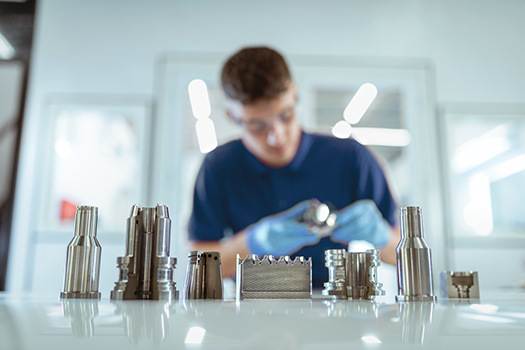
The growing use of AM goes along with a number of standards-developing organizations and classification bodies—including ASTM International, the International Organization for Standardization (ISO), the American Society of Mechanical Engineers (ASME) and Norway’s DNV—releasing standards for additive manufacturing. However, from a standards perspective, API 20S and 20T are the first standards specific to 3D printing for manufacturers supplying the natural gas and oil sector with components.
Standardization is one of the most highlighted challenges often encountered by organizations that operate in demanding industries such as Oil & Gas. Be it in Europe or in the USA, organizations are continuously joining forces to define a guideline and a business model for the use of AM in the Oil & Gas sector. As a reminder, these guidelines help to assure that parts meet minimum material requirements, as well as reduce the cost of components’ qualification, which is a critical process to demonstrate a part meets or exceeds certain manufacturing standards.
One of the recent milestones in the field is the development of two new standards for 3D printed components by American Petroleum Institute (API), a trade association that represents all aspects of America’s oil and natural gas industry.
Designed for polymer-based and metal 3D printed components
Named API Standard 20S, Additively Manufactured Metallic Components for Use in the Petroleum and Natural Gas Industries, and API Standard 20T, Additively Manufactured Polymer-Based Components for Use in the Petroleum and Natural Gas Industries, the new standards reflect the industry’s incorporation of new technologies and innovations to improve operations.
They represent the baseline requirements and process controls for additive manufacturers that supply the natural gas and oil industry with components. In particular, API 20S and 20T specify requirements for qualification of the manufacturing process, production, marking and documentation of 3D printed components. The standards also provide guidance to test and document the material properties for 3D printing of polymer-based and metallic components, and they introduce three additive manufacturing specification levels that define increasing technical, quality and qualification requirements.
“These new standards reflect the industry’s focus on embracing cutting-edge technologies and innovations to meet global energy demand, while continuously striving to be cleaner, safer and more efficient,” said Anchal Liddar, senior vice president of API’s Global Industry Services.
There are currently limits on where 3D printed components can, and should, be used, taking into account unique and challenging production environments. Therefore, further testing of additively manufactured processes and material inputs is needed to ensure that components can withstand sustained contact with hydrogen sulfide, carbon dioxide and chlorides that are part of the hydrocarbon mix, as well as perform under different pH levels, temperatures and pressures. Components’ suitability for sour and non-sour grades also needs to be demonstrated.
This will entail identifying and testing polymers, as well as metals and alloys critical to the industry, that can be produced through the latest additive manufacturing techniques in accordance with API 20S and 20T, with a focus on methods suitable for large-scale and pressure-containing parts. API 20S and 20T are base documents that allow the industry to leverage these standards for various components and identify where they are best applicable.
As you may guess, the qualification process is left to the end-user to define application requirements and develop functional specifications to meet these requirements.
Source: World Oil. Remember, you can post job opportunities in the AM Industry on 3D ADEPT Media free of charge or look for a job via our job board. Make sure to follow us on our social networks and subscribe to our weekly newsletter : Facebook, Twitter, LinkedIn & Instagram ! If you want to be featured in the next issue of our digital magazine or if you hear a story that needs to be heard, make sure to send it to contact@3dadept.com





